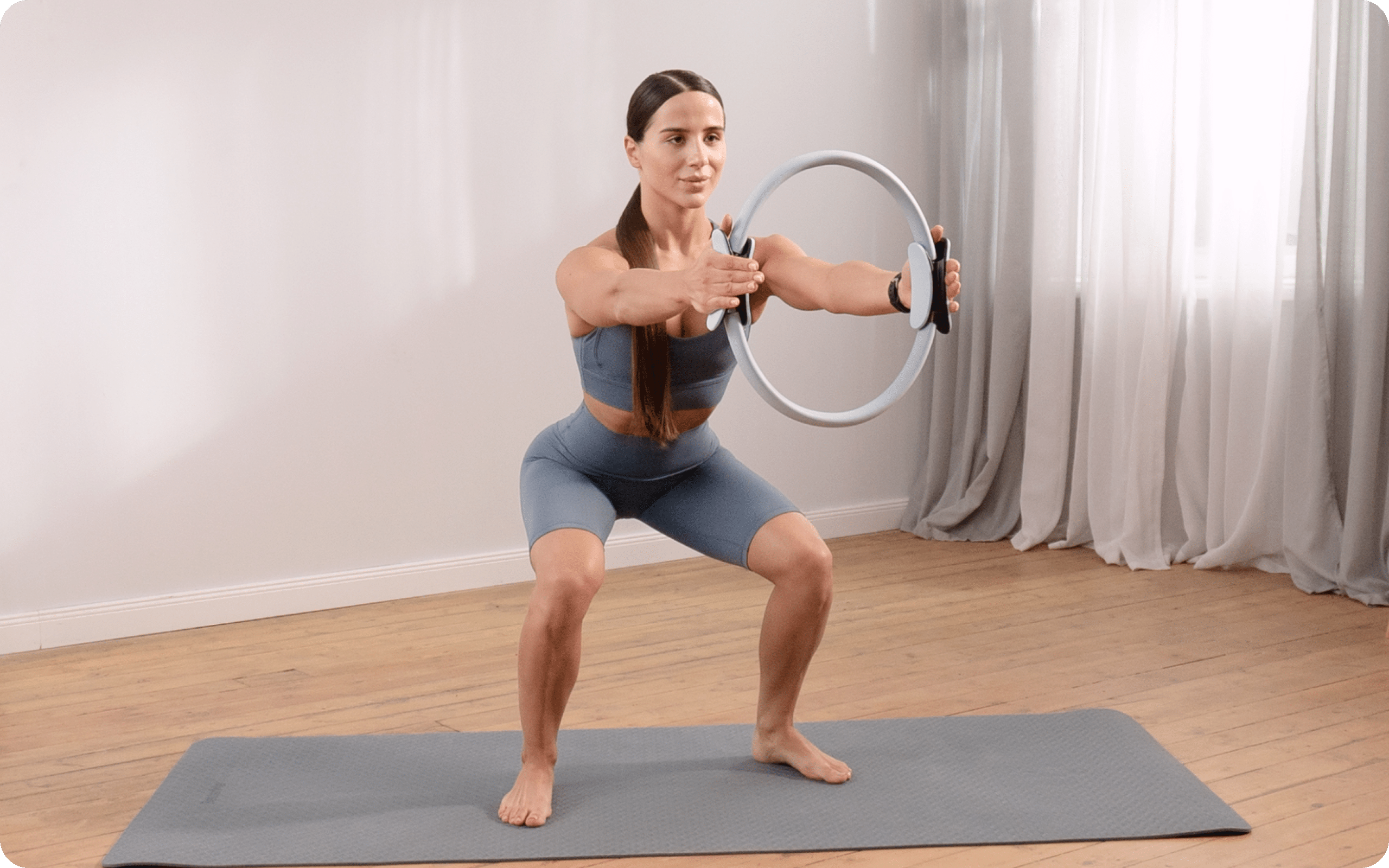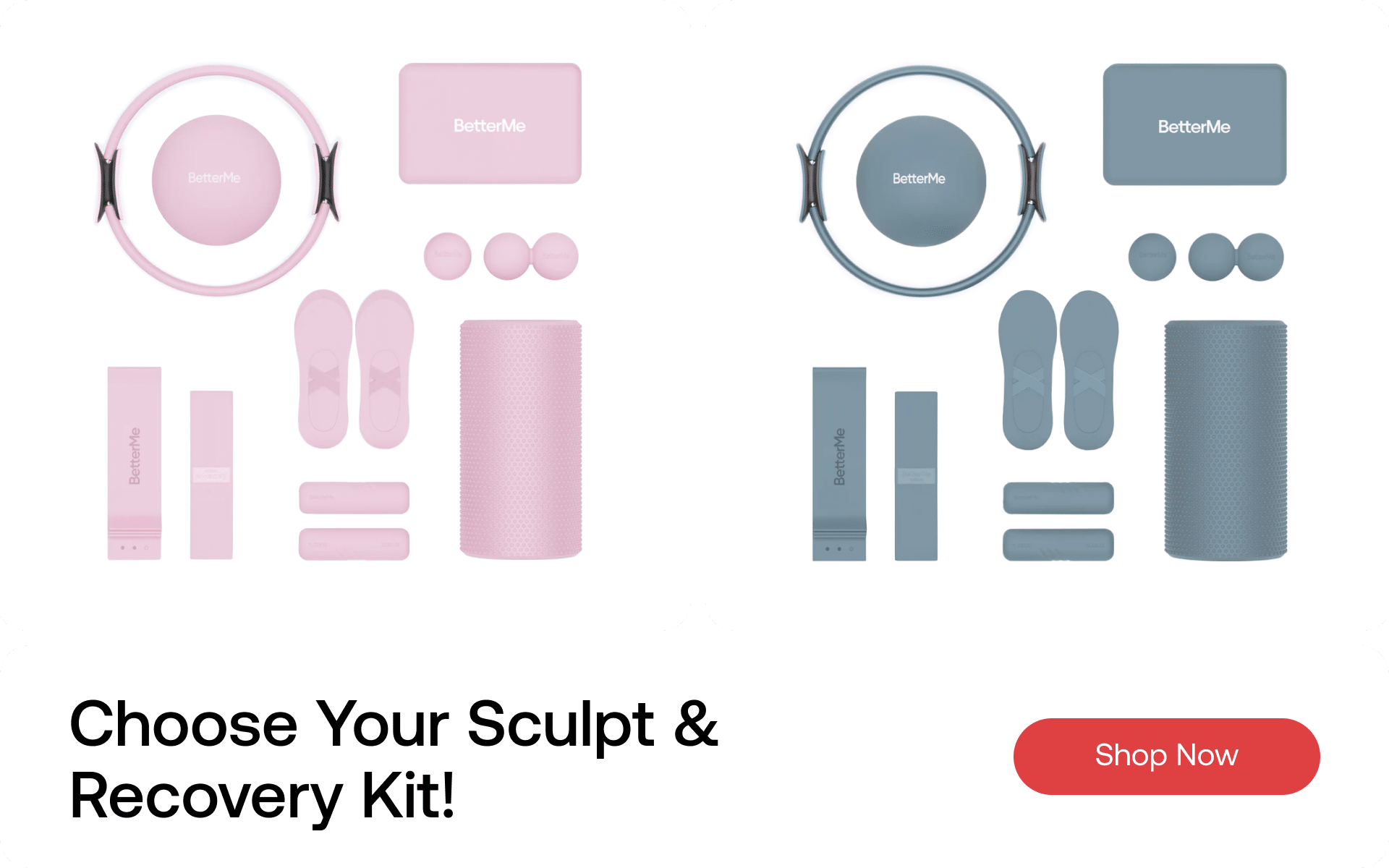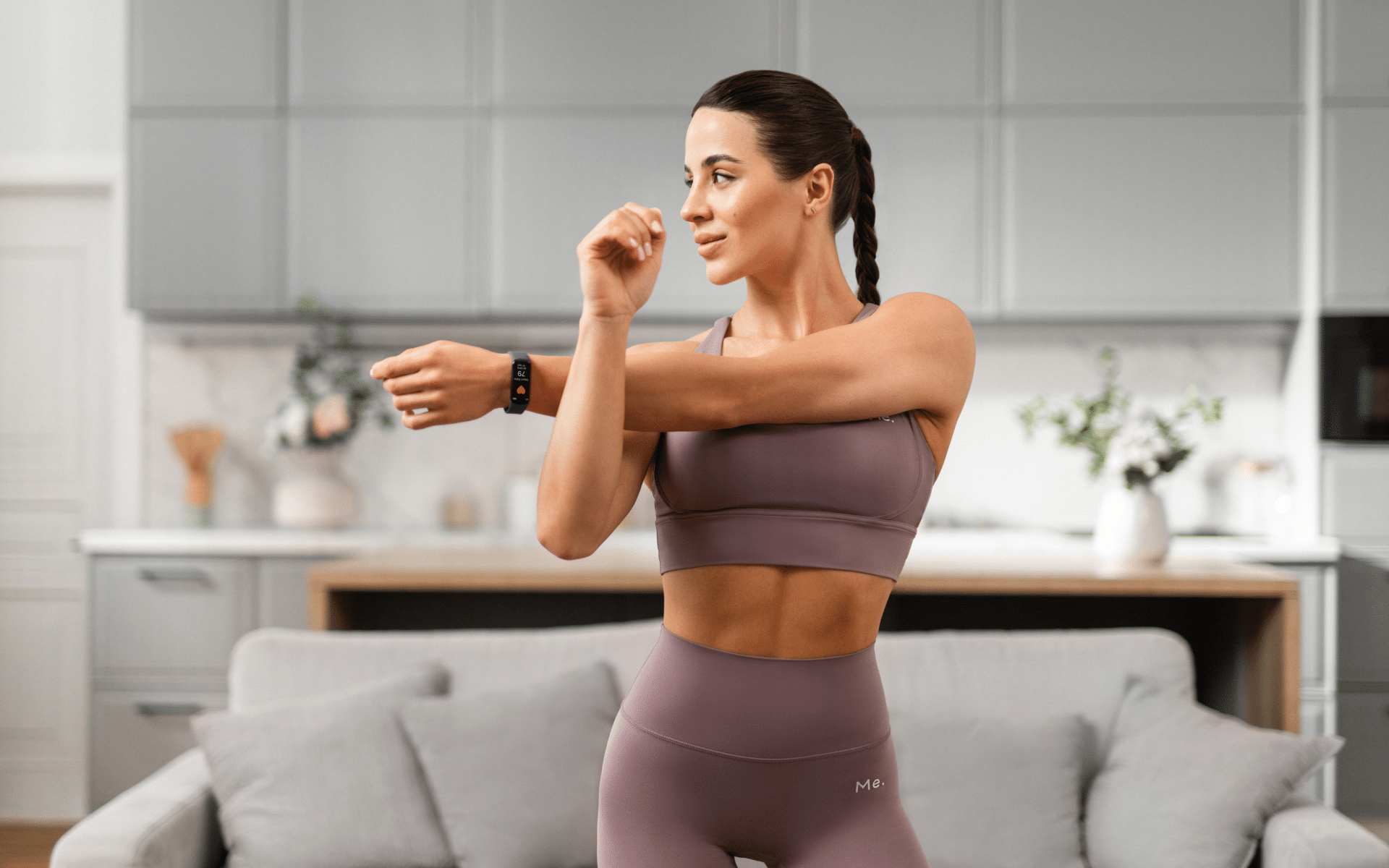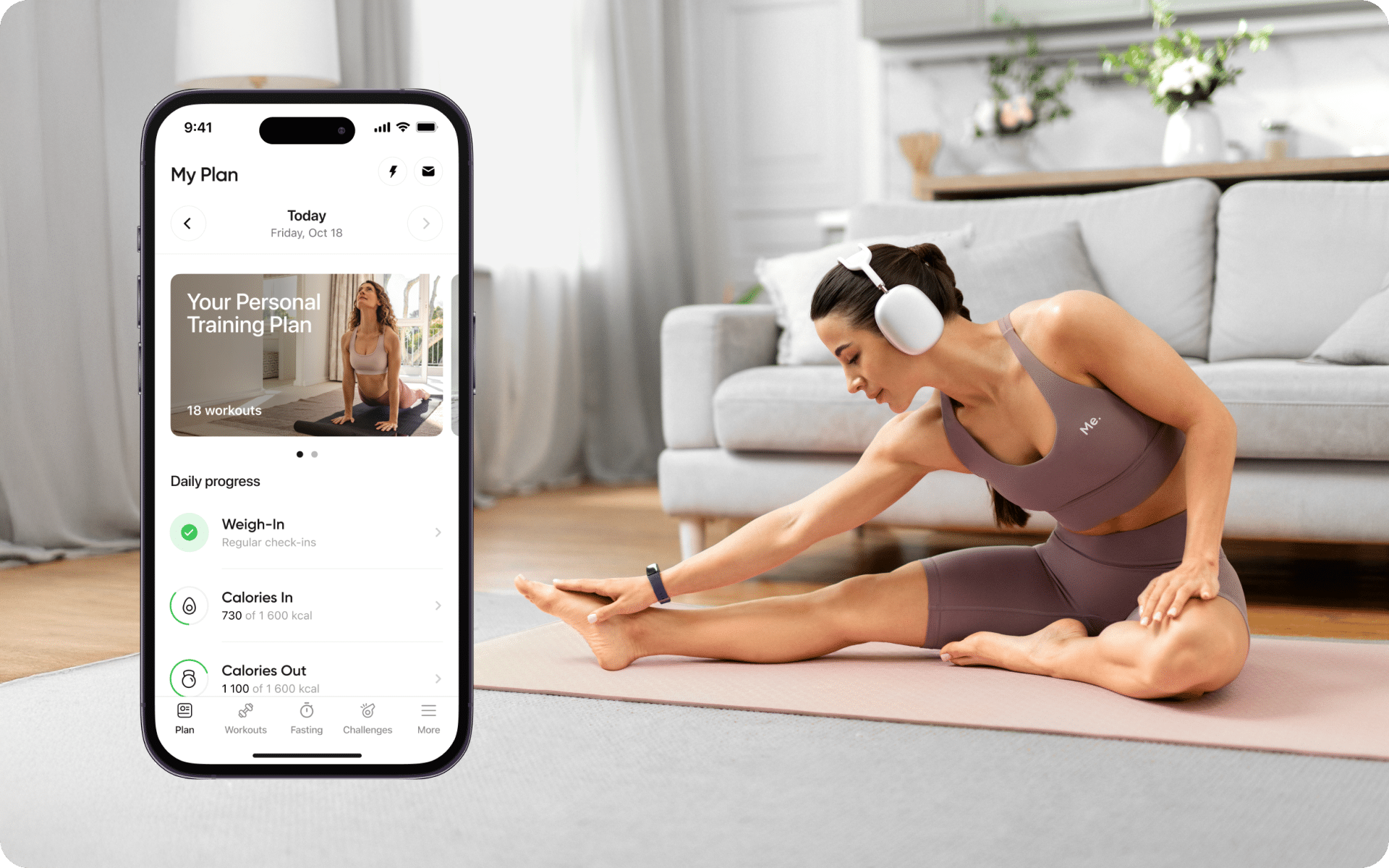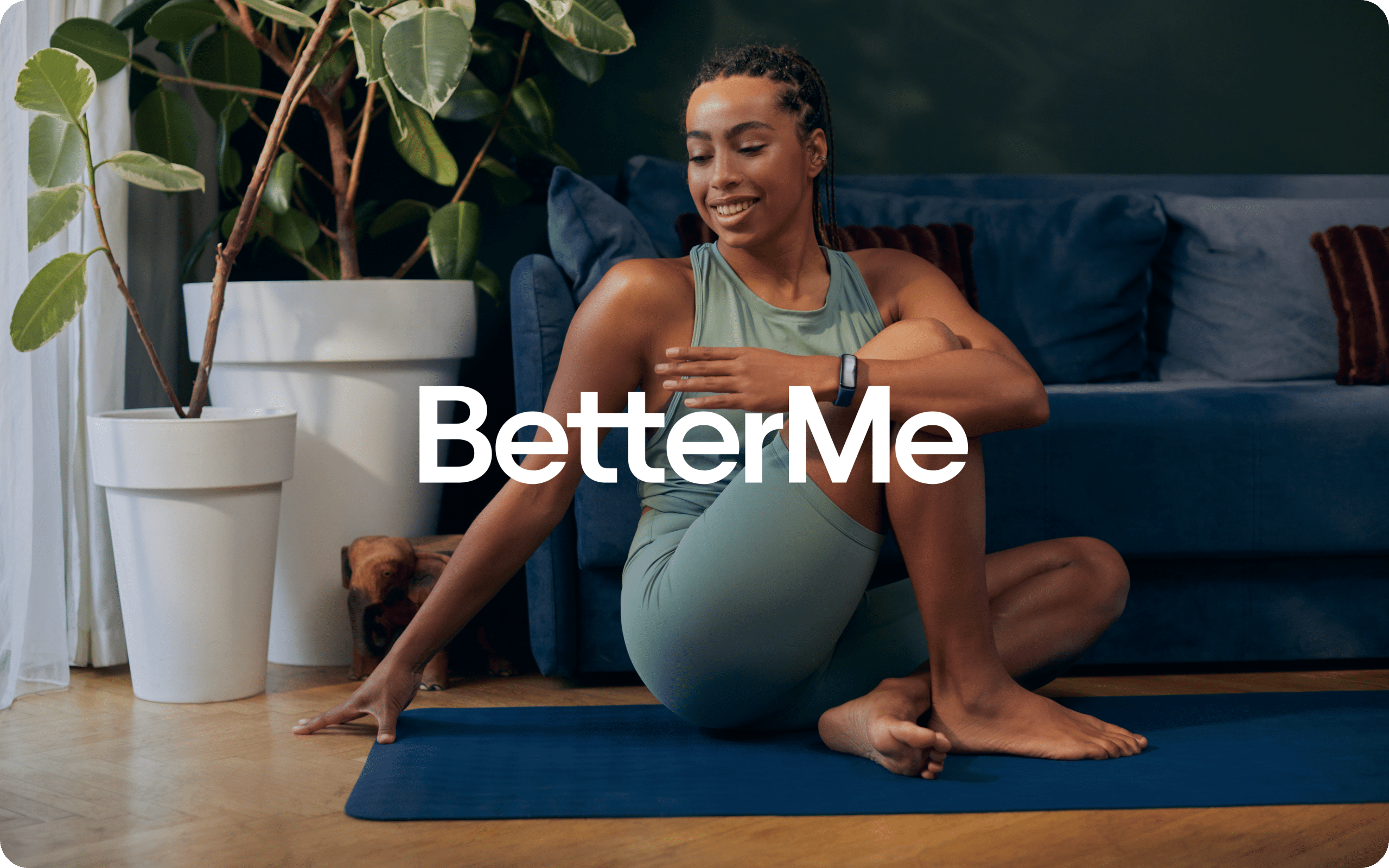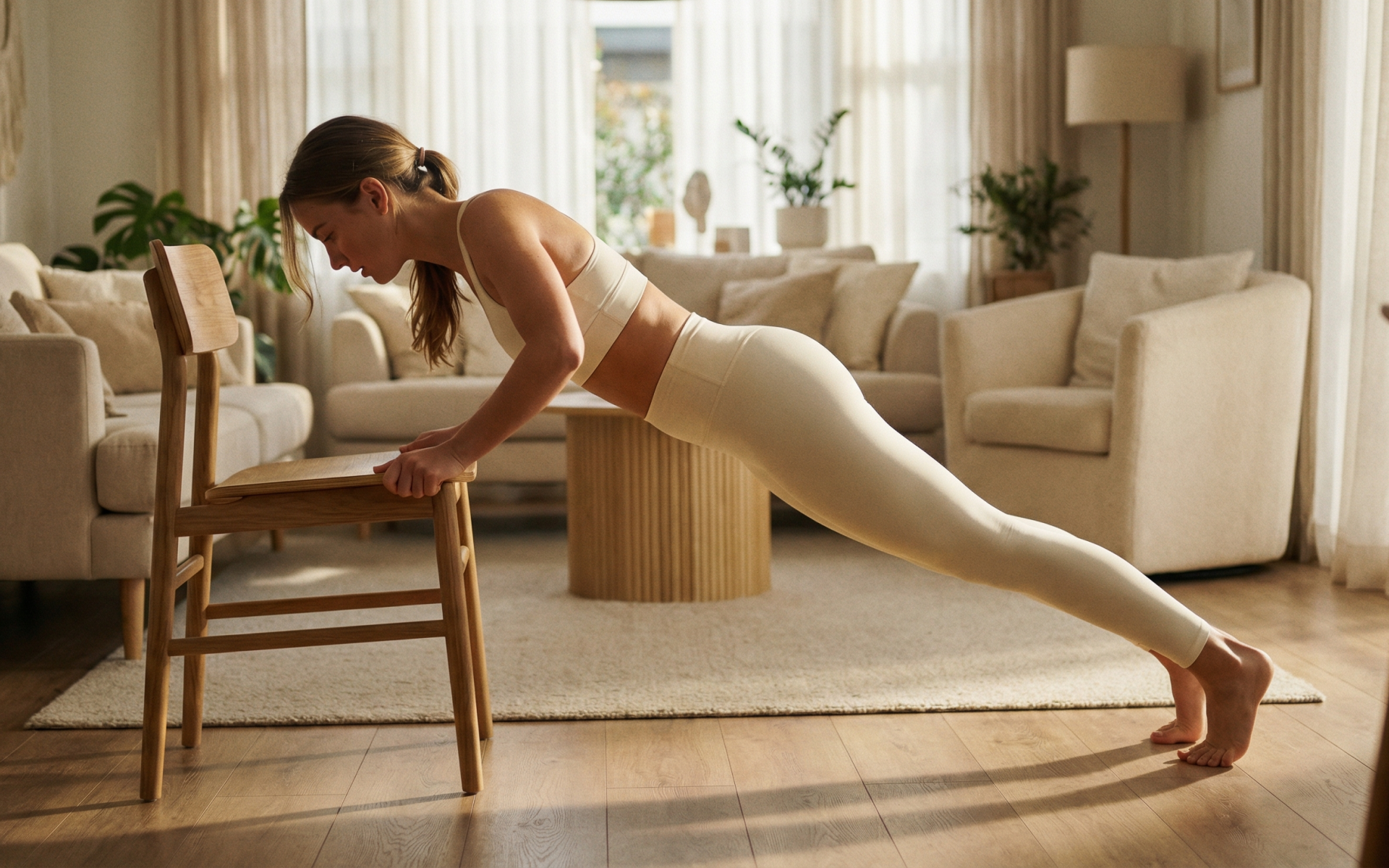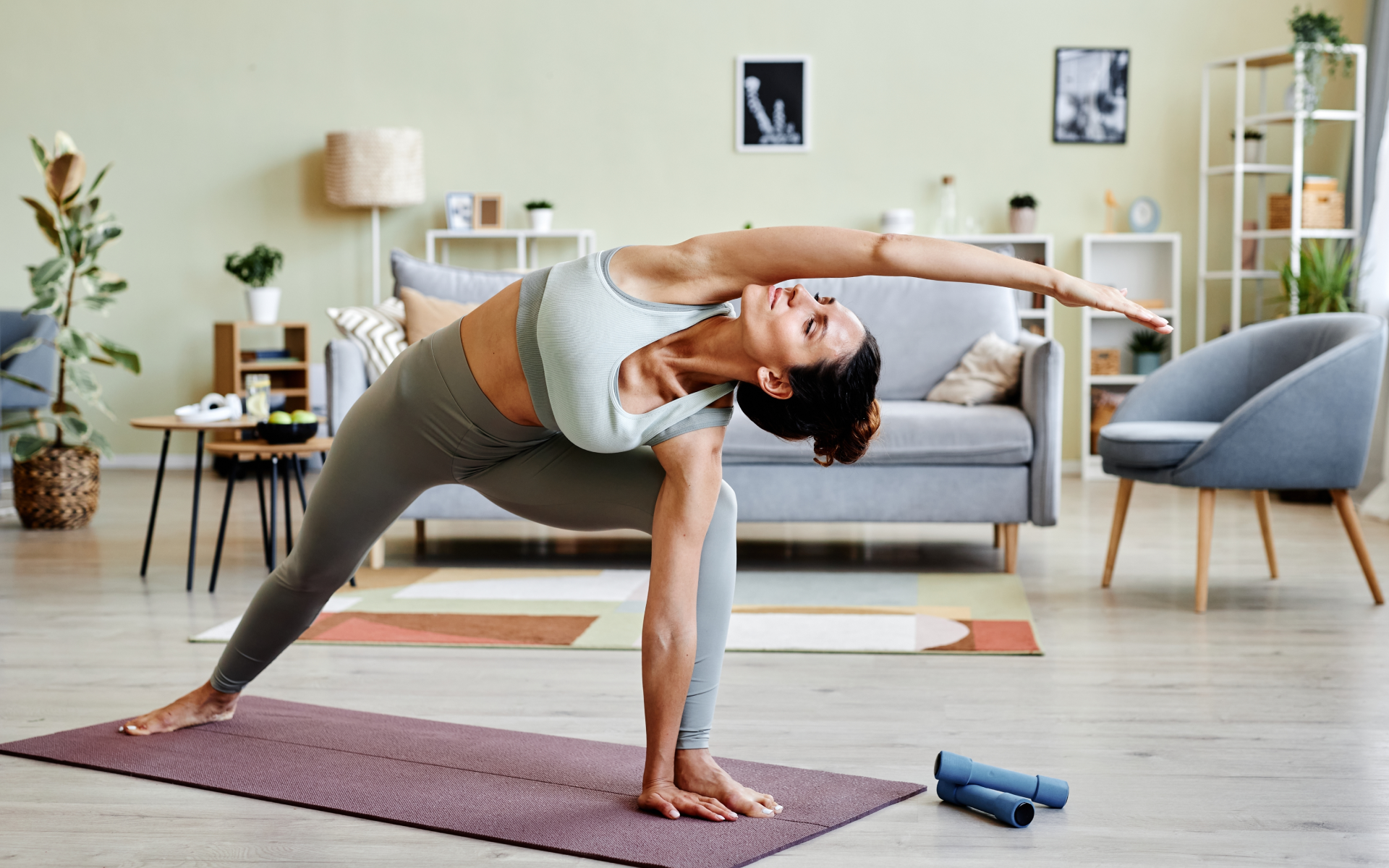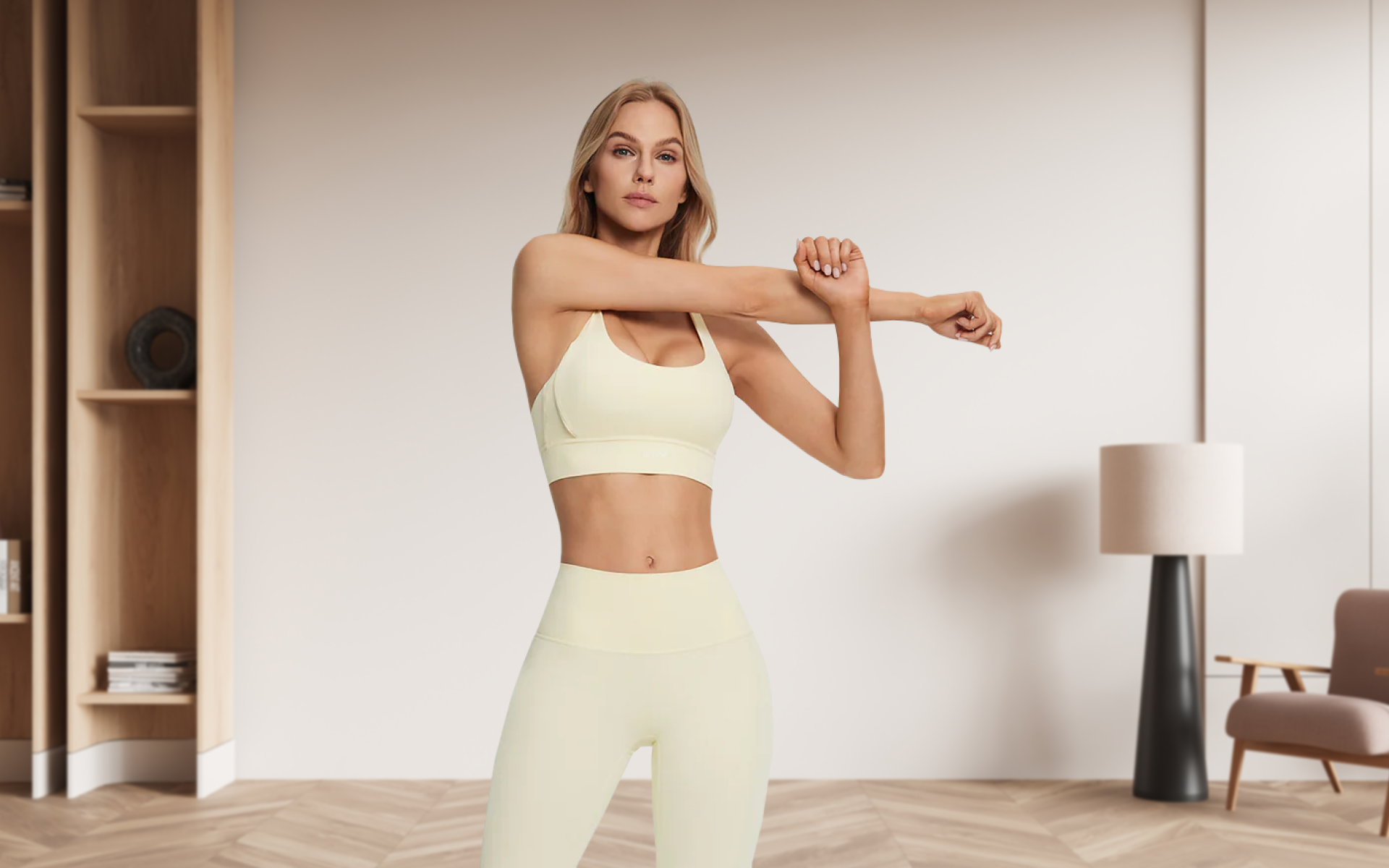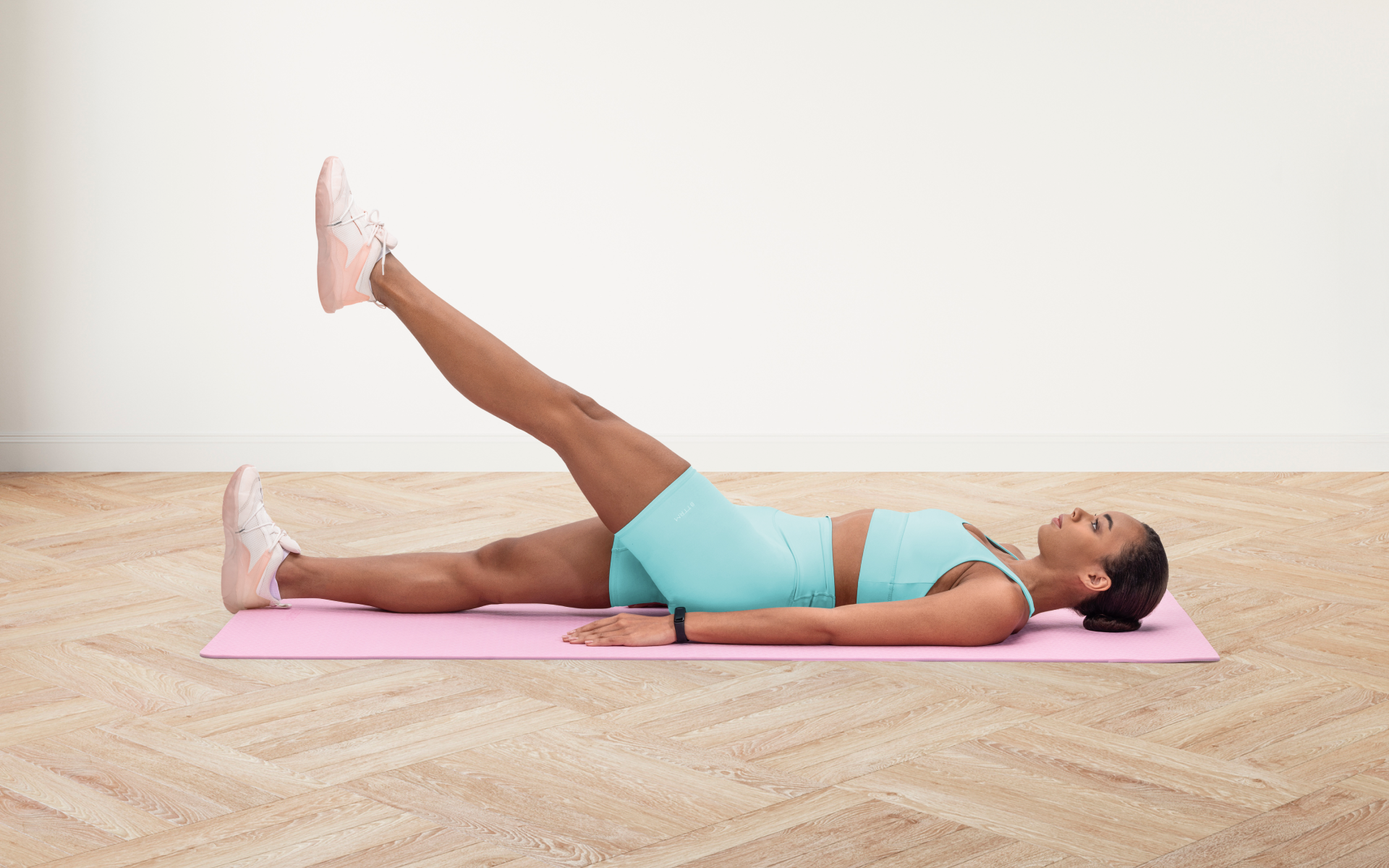Getting started is often the hardest part of exercising. Many of us know we should move more but lack the motivation to begin. And when we do start, we struggle to maintain consistency.
What often helps is to have a clear plan with SMART goals. Which are Specific, Measurable, Achievable, Realistic, and Timely goals. Hopping on a challenge, like the 28 Day Pilates Challenge, can offer the structure needed to stay engaged. This allows you to set short-term goals, track progress, and stay motivated. It also introduces variety, making workouts fun instead of a chore.
So, you may wonder if committing to this challenge is worth it. Will 28 days do the trick, jumpstarting a fitness journey that is sustainable? Or, are you better off seeking another strategy?
Here’s what you need to know to decide if the 28 Day Pilates Challenge aligns with your fitness goals and lifestyle.
What Is The 28-Day Pilates Challenge?
The 28 Day Pilates Challenge is a structured program designed to introduce you to the basics of Pilates and help you establish a consistent routine in just four weeks.
The challenge typically consists of daily workouts ranging from 15 to 30 minutes. These workouts may include a combination of mat exercises and the use of equipment like resistance bands and Pilates balls. Each day, you will be guided through different movements, targeting various muscle groups.
The 28 day pilates challenge for beginners may have more modifications and slower-paced workouts, while the advanced challenge may include more challenging movements and faster-paced routines.
Along with the daily workout, some challenges may also include nutrition guides or meal plans to support your fitness goals.
Can You Transform Your Body In 28 Days?
The 28 Day Pilates Challenge can transform your body by increasing strength, flexibility, and muscle tone. The claim is through its combination of low-impact exercises that target the entire body. But is this possible in just four weeks?
The answer depends on your starting point. If you’re starting out as sedentary or new to fitness, then yes, you can make significant progress in 28 days. However, if you’ve been active for some time, the results may be less drastic.
Pilates is a form of resistance training, and like any exercise program, a well balanced diet and consistent practice is needed to start seeing changes in your body. Therefore, committing to this challenge and completing it as instructed will likely result in improved muscle tone and increased strength and flexibility. However, individual results will vary.
BetterMe app is a foolproof way to go from zero to a weight loss hero in a safe and sustainable way! What are you waiting for? Start transforming your body now!
Does 28 Days of Pilates Really Work?
If you fully engage in the challenge and push yourself during workouts, you will likely see positive results after 28 days. Realistically, you can expect that:
You’ll Feel Stronger
This is especially true if you’re new to Pilates or resistance training. The exercises included in the challenge are designed to target different muscle groups, including those often neglected in daily life. By consistently practicing, you’ll start building strength and notice improved body control and posture (1).
Pilates was originally called Contrology because its creator, Joseph Pilates, believed that the method could help people gain control over their bodies (1). By the end of 28 days, you may notice that moving through exercises feels more natural and fluid.
You’ll Be More Flexible
Pilates is known for improving flexibility, with many exercises focusing on stretching and elongating muscles. Over time, this can lead to improved range of motion and reduced stiffness (1). By the end of 28 days, you may notice that everyday movements such as bending over or reaching for objects feel easier.
Your Sleep Quality Might Improve
An aspect of Pilates that often goes unnoticed is its focus on breathing and relaxation. Many people who regularly practice Pilates report better sleep quality, due to the calming effects of deep breathing and mindfulness. Therefore, completing this challenge may not only improve your physical health but also positively impact your mental well-being (3).
You’ll Feel More Confident
Completing the 28 Day Pilates Challenge requires dedication, discipline, and perseverance. As you progress through the program, you’ll likely feel a sense of accomplishment and pride in yourself for sticking to it. This can lead to increased self-confidence and motivation to continue with your fitness journey beyond the challenge.
You’ll Make Better Choices
When you commit to an exercise program like the 28 Day Pilates Challenge, you’ll also be more likely to make healthier choices in other areas of your life. Exercise has been shown to increase self-control and promote better decision-making when it comes to nutrition and overall well-being. Therefore, even after the challenge is over, you may find yourself continuing with healthy habits.
Is The 28 Day Pilates Challenge Free?
You’re likely to find different variations of the 28 Day Pilates Challenge online, some offered for free and others for a fee. While it can be tempting to opt for a free program, keep in mind that these may not offer the same level of support or instruction as paid ones.
To get the most out of your experience and ensure proper form and technique, consider investing in a reputable program with certified instructors. This will not only increase your chances of seeing results but also prevent potential injuries.
The BetterMe Pilates section of the app, for example, offers a 28 Day Pilates Challenge with daily workout routines and instructional videos. It also tracks your progress and provides nutrition tips to complement your workouts. Additionally, the app has a community feature where you can connect with others doing the challenge and stay motivated together.
We’ve discussed more ways to start and design your pilates exercises in our, pilates exercises for beginners 2 blog.
How to Design Your Own 28 Day Pilates Workout
Having a 28 day wall Pilates challenge chart can help you stay organized and accountable throughout the program. But if you prefer to design your own workouts, here are some tips to help:
Understand the Principles
Before designing your own Pilates workouts, make sure you have a good understanding of the fundamental principles of the method. These include:
- Breathing: Proper breathing is crucial in Pilates to facilitate movement and engage the core muscles.
- Control: Pilates emphasizes control over movements, rather than just going through the motions.
- Concentration: Focusing on each exercise and its purpose can improve mind-body connection and overall effectiveness.
- Centering: The center of the body (core) is where all movements stem from in Pilates.
- Precision: Every movement in Pilates should be precise and intentional, with proper form and alignment.
- Flow: The exercises in a Pilates workout should flow smoothly from one to the next, creating a sense of fluidity.
Read more: Wall Pilates for Butt: A Quick Guide for Beginners
Master the Basics
Joseph Pilates developed a series of exercises known as the “Pilates basics” or “classical mat sequence.” These are the foundation of Pilates and can be modified to suit different fitness levels. Before creating your own workouts, make sure you’ve mastered these basic exercises and understand how to modify them for various levels.
Here’s a quick overview of the classical mat sequence (34 exercises total):
- The Hundred
- The Roll Up
- Single Leg Circles
- Rolling Like a Ball
- Single Leg Stretch
- Double Leg Stretch
- Spine Stretch Forward
- Open Leg Rocker
- Corkscrew
- Saw
- Swan Dive (or Swimming)
- One Leg Kick
- Double Leg Kick
- Neck Pull
- Scissors
- Bicycle
- Shoulder Bridge
- Spine Twist
- Jackknife
- Side Kick Series (Front, Back, and Up & Down)
- Teaser
- Hip Twist with Stretch
- Swimming
- Leg Pulls (Front and Back)
- Side Bend
- Boomerang
- Seal
- Crab (or Rocking)
- Rocking Chair
- Control Balance
- Push Up Series (Bent Knee, Straight Leg, and Tuck)
- The Frog
- High Scissors
- High Bicycle
In our, pilates moves article we’ve listed more moves you can try.
Create Your Own Sequences
Once you have a good understanding of the principles and mastered the basic exercises, you can start creating your own Pilates sequences. Keep in mind the following tips:
- Start with a warm-up: A proper warm-up is essential to prepare your body for more intense movements (6).
- Include different planes of movement: Pilates exercises are typically movements that are done in the sagittal plane (forward and back) but can also involve movements in the frontal (side to side) and transverse (rotational) planes.
- Incorporate props: Props like resistance bands, balls, or weights can add variety and challenge to your workouts.
- Alternate between strength and flexibility exercises: It’s important to balance strength and flexibility in your workouts to avoid muscle imbalances and prevent injuries (4).
- End with a cool down: Similar to the warm-up, ending with a cool down can help ease tension in the muscles and bring your heart rate back to resting (6).
Review Your Exercise Selection
Before finalizing your workout plan, make sure to review the exercises you’ve chosen and ensure they flow well together.
Here are some of the most common exercises to include in your Pilates workout, with steps for each (we’re including the exercise purpose for each so you know what to focus on):
The Hundred (Warm-up and Core Engagement)
Starting your workout with “The Hundred” helps to warm up the body and engage the core muscles effectively. This exercise can also increase circulation and prepare you for more intense movements.
- Lie on your back with your knees bent and feet flat on the floor.
- Lift your head, neck, and shoulders off the mat as you extend your legs to a 45-degree angle.
- Extend your arms alongside your body, hovering just above the floor.
- Pump your arms up and down while taking five short breaths in and five short breaths out, completing a total of 100 pumps.
The Roll Up (Spinal Articulation)
“The Roll Up” is excellent for improving spinal flexibility and strengthening the abdominals. It is typically performed early in the workout to enhance spinal mobility and core strength. This is a great example of a dynamic warm up option, which is an ideal way to prepare the body for exercise.
- Lie on your back with your arms extended overhead and legs straight.
- Inhale as you lift your arms toward the ceiling.
- Exhale as you roll up sequentially through your spine until you’re reaching for your toes.
- Inhale as you begin to roll back down, exhaling as you complete the movement, ensuring vertebrae articulate one by one.
Single Leg Circles (Hip Mobility and Abdominal Control)
“Single Leg Circles” promote hip mobility and challenge the abdominal muscles to stabilize the pelvis. This exercise can be performed early in the workout to warm up the hips and engage the core.
- Lie on your back with one leg extended toward the ceiling and the other leg flat on the mat.
- Draw a small circle with the raised leg, moving from the hip.
- Keep the circles smooth and controlled, changing direction halfway through the reps.
- Repeat with the other leg.
Rolling Like a Ball (Spinal Flexibility and Core Strength)
“Rolling Like a Ball” increases spinal flexibility and strengthens the deep core muscles. This playful exercise can be inserted in the middle of the workout as a way to maintain flow and dynamic movement.
- Sit with your knees bent and close to your chest, feet off the ground, and hands around your shins.
- Balance on your sit bones, maintaining a C-curve in your spine.
- Inhale to roll back onto your shoulder blades.
- Exhale to roll back up to the starting position, keeping the movement fluid without using momentum.
Intense sweat sessions, working weight loss tips, lip-smacking recipes come in one package with the BetterMe app. And all of it is at your fingertips, start transforming your life now!
Single Leg Stretch (Core Strength and Coordination)
“Single Leg Stretch” targets the abdominals while also promoting coordination and balance. This exercise fits into the mid-section of the workout to sustain core engagement.
- Lie on your back with your knees bent and shins parallel to the floor.
- Lift your head, neck, and shoulders off the mat, holding one knee into your chest while extending the other leg at a 45-degree angle.
- Switch legs and extend the opposite leg while hugging the opposite knee into your chest.
- Continue alternating legs with a controlled breath for each switch.
Double Leg Stretch (Full Body Coordination and Core Strength)
“Double Leg Stretch” is ideal for engaging the entire body while promoting core strength and coordination. Place this exercise in the middle of the routine for a comprehensive core challenge.
- Begin in the same position as the Single Leg Stretch.
- Inhale as you extend both legs and arms away from the body simultaneously.
- Exhale as you circle your arms back to the starting position, hugging your knees into your chest.
- Keep your head, neck, and shoulders lifted throughout the movement.
Spine Stretch Forward (Spinal Flexibility and Hamstring Stretch)
“Spine Stretch Forward” aims to enhance spinal flexibility and stretch the hamstrings. It serves well toward the latter part of the workout to introduce some calming, lengthening movements.
- Sit with your legs extended hip-width apart and feet flexed.
- Extend your arms straight out in front of you at shoulder height.
- Inhale as you lengthen your spine upward.
- Exhale as you reach forward, articulating each vertebra while keeping the arms parallel to the floor.
- Inhale to roll back up to the starting position, stacking the spine as you go.
Saw (Spinal Rotation and Flexibility)
“The Saw” is designed to improve spinal rotation and stretch the hamstrings. This exercise fits well toward the end of the workout to add rotational movements and provide a deeper stretch.
- Sit with your legs extended wider than hip-width apart and arms out to the side.
- Inhale to prepare, sitting tall.
- Exhale as you twist your torso toward one leg and reach the opposite arm towards the outside of the foot, your other arm reaching back.
- Inhale to return to the center.
- Repeat on the other side, maintaining control and a fluid motion.
Choose a Challenge Duration
Decide on the duration of your challenge, whether it’s 28 days or a different timeframe. Then, plan out your workouts for each day, mixing in different exercises and focusing on different areas of the body.
Also, be sure to schedule rest days throughout the challenge to allow for proper recovery and prevent burnout. Rest is just as important as exercise in achieving overall fitness and health.
Read more: Pilates Full Body Workout for Beginners (No Equipment Needed)
Is The 28 Day Challenge Worth It?
The 28 Day Challenge is an excellent way to jumpstart or recommit to your fitness journey. It provides structure, accountability, and a variety of exercises to target different muscle groups and improve overall strength and flexibility.
However, it’s important to remember that the challenge is just a starting point for long-term fitness goals. After completing the 28 days, continue incorporating regular exercise and healthy habits into your daily routine to maintain progress and overall health.
In our, what are grip socks blog we discuss how grip socks are crucial for your pilates workout.
FAQs
Can Pilates Change Your Body In 2 Weeks?
2 weeks may not be enough time to see significant changes in your body, but it’s a great start to building a strong foundation and creating healthy habits.
Is 20 Minutes of Pilates Enough To Lose Weight?
Whether 20 minutes of Pilates is enough for weight loss depends on various factors such as intensity, frequency, and nutrition.
- Intensity – If the 20 minutes consists of high-intensity Pilates exercises, it can contribute to weight loss.
- Frequency – Doing 20 minutes of Pilates every day will have a more significant impact on weight loss compared to doing it once a week.
- Nutrition – Weight loss also depends on nutrition and maintaining a calorie deficit (2). Combining Pilates with a healthy diet can lead to weight loss.
Is Wall Pilates Better Than Pilates?
Wall Pilates uses a wall or any sturdy object for support, making it suitable for those with mobility issues. Traditional Pilates exercises focus more on core strength and flexibility, while Wall Pilates may be more beneficial for individuals looking to improve balance and stability. Both forms of Pilates have their benefits, which means that it ultimately depends on your fitness goals and needs.
The Bottom Line
The 28 Day Challenge can be a great starting point for a healthier lifestyle and a stronger body. By incorporating different Pilates exercises, setting a specific duration, and scheduling rest days, you can create a well-rounded challenge that caters to your needs and goals.
You may create variations and customize the challenge to fit your fitness level. You may go as far as creating your own challenges. The key is to stay consistent and committed to your fitness journey even after the challenge ends, leading to long-term health benefits.
DISCLAIMER:
This article is intended for general informational purposes only and does not serve to address individual circumstances. It is not a substitute for professional advice or help and should not be relied on for making any kind of decision-making. Any action taken as a direct or indirect result of the information in this article is entirely at your own risk and is your sole responsibility.
BetterMe, its content staff, and its medical advisors accept no responsibility for inaccuracies, errors, misstatements, inconsistencies, or omissions and specifically disclaim any liability, loss or risk, personal, professional or otherwise, which may be incurred as a consequence, directly or indirectly, of the use and/or application of any content.
You should always seek the advice of your physician or other qualified health provider with any questions you may have regarding a medical condition or your specific situation. Never disregard professional medical advice or delay seeking it because of BetterMe content. If you suspect or think you may have a medical emergency, call your doctor.
SOURCES:
- 7 Reasons to Try Pilates (2024,ymcasuperiorcal.org)
- Calorie Deficit: What To Know (2022,clevelandclinic.org)
- Effect of Pilates on Sleep Quality: A Systematic Review and Meta-Analysis of Randomized Controlled Trials (2020,nih.gov)
- How to improve your strength and flexibility (2020,nhs.uk)
- Pilates – health benefits (2022,betterhealth.vic.gov.au)
- Warm Up, Cool Down (2020,heart.org)


